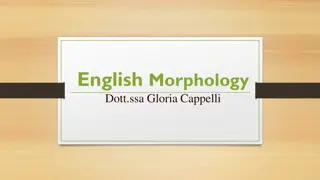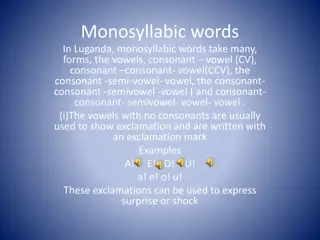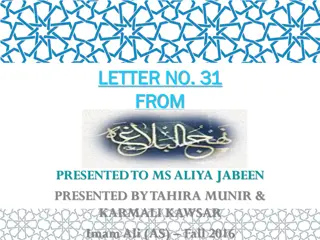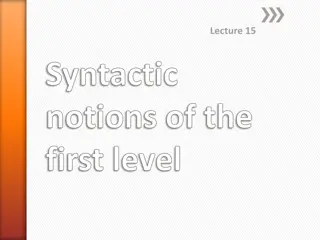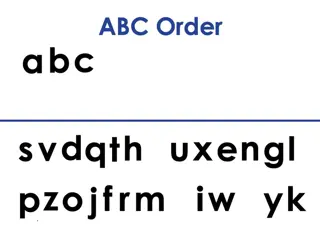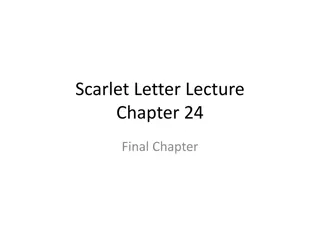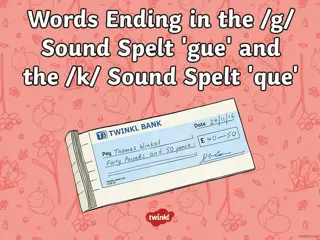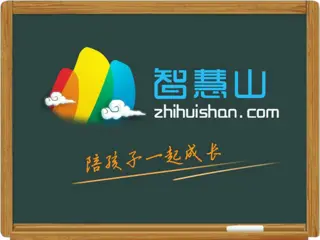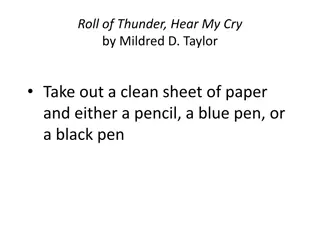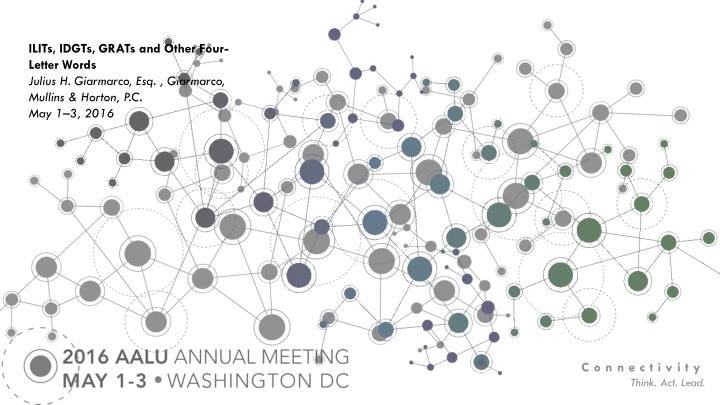
Wealth Transfer Strategies and Advanced Gifting Techniques
Explore ILITs, IDGTs, GRATs, and other four-letter words in estate planning. Learn about wealth transfer strategies, reducing estate taxes, and advanced gifting techniques like ILITs, IDGTs, SLATs, and more to optimize your estate plan.
Download Presentation

Please find below an Image/Link to download the presentation.
The content on the website is provided AS IS for your information and personal use only. It may not be sold, licensed, or shared on other websites without obtaining consent from the author. If you encounter any issues during the download, it is possible that the publisher has removed the file from their server.
You are allowed to download the files provided on this website for personal or commercial use, subject to the condition that they are used lawfully. All files are the property of their respective owners.
The content on the website is provided AS IS for your information and personal use only. It may not be sold, licensed, or shared on other websites without obtaining consent from the author.
E N D
Presentation Transcript
ILITs, IDGTs, GRATs and Other Four- Letter Words Julius H. Giarmarco, Esq. , Giarmarco, Mullins & Horton, P.C. May 1 3, 2016 C o n n e c t i v i t y Think. Act. Lead.
Wealth Transfer Strategies Annually Over Lifetime Transfer of wealth excluded from any gift tax Transfer of wealth through GST, estate, and gift tax exemptions Transfer of wealth utilizing discount strategies Transfer of wealth utilizing freeze strategies (appreciation-only gifts) Transfer of wealth through taxable gifts $14,000 per individual ($28,000 gift splitting with spouse) per donee Gift tax exemption of up to $5.45M per individual3 Family limited partnership (FLP) Grantor retained annuity trust (GRAT) Pay gift tax now rather than paying estate tax later Family limited liability company (FLLC) Intentionally defective grantor trust (IDGT) Converting traditional IRA to Roth IRA5 GST and estate tax exemptions of $5.45M per individual3 Direct payments to educational institutions and health care providers1 Non-voting shares in family corporation (C or S corporation) Qualified personal residence trust (QPRT) Generation-skipping transfer trust (GST) Irrevocable life insurance trusts (ILIT)2 Intra-family loan Statutory freeze partnership (FLP or FLLC)4 Charitable planning: CRTs and CLTs. 1 To qualify for exclusion, gifts of tuition and medical expenses must be made directly to the provider. 2 Often can be structured to use annual exclusion gifting. 3 Adjusted annually for inflation ($5.45M for 2016). 4 Can serve to both utilize discount and transfer wealth utilizing freeze strategies. 5 Paying the income tax in converting a traditional IRA to a Roth IRA is essentially a tax-free gift. C o n n e c t i v i t y Think. Act. Lead.
Three General Strategies for Reducing Estate Taxes The FET is only vulnerable to lifetime gifting. Leveraging cash gifts through the purchase of life insurance in an ILIT. Gifts that shift or reduce value. Gifts to charity. C o n n e c t i v i t y Think. Act. Lead.
Advanced Gifting Techniques Irrevocable Life Insurance Trusts (ILITs). Intentionally-Defective Grantor Trusts (IDGTs). Grantor Retained Annuity Trusts (GRATs). Spousal Lifetime Access Trusts (SLATs). Beneficiary-Defective Inheritor s Trusts (BDITs). C o n n e c t i v i t y Think. Act. Lead.
Advanced Gifting Techniques Family Limited Liability Companies (FLLCs). Qualified Personal Residence Trusts (QPRTs). Promissory Note Sale to Residence Trust (PNRTs). Charitable Remainder Uni-Trusts (CRUTs). C o n n e c t i v i t y Think. Act. Lead.
IRREVOCABLE LIFE INSURANCE TRUSTS C o n n e c t i v i t y Think. Act. Lead.
ILITs Crummey Gifts Premium Payments Grantor/ Insured Dynasty/ ILIT Insurance Company Allocate GST Exemption Death Benefit Net Proceeds Children and More Remote Descendants C o n n e c t i v i t y Think. Act. Lead.
ILITs Dynasty Trust Grantor No transfer tax paid. Discretionary Distributions to Children for Life Advantages Creditor protection Divorce protection Estate tax protection Assets remain in bloodline Dispositive plan protection Spendthrift protection Consolidation of capital Gift should take advantage of any remaining lifetime gift exclusion and lifetime GST exclusion No transfer tax paid. Discretionary Distributions to Grandchildren for Life No transfer tax paid. Discretionary Distributions to Great-Grandchildren for Life No transfer tax paid. Future Generations C o n n e c t i v i t y Think. Act. Lead.
ILITs Power of Compound Growth Economics o Assumptions: $1 million of life insurance at grantor s death. Trust continues for 120 years after grantor s death. Maximum term varies by state. 40% transfer tax imposed on non-dynastic trust assets every 30 years. C o n n e c t i v i t y Think. Act. Lead.
ILITs Power of Compound Growth Chart $1 Million Example: Dynasty Trust vs 40% Estate Tax Every 30 Years Value of Dynasty Trust After 120 Years Value of Property if No Trust After-Tax Growth 3.00% $34,710,987 $4,498,544 4.00% $110,662,561 $14,341,868 5.00% $348,911,561 $45,218,993 6.00% $1,088,187,748 $141,029,132 7.00% $3,357,788,383 $434,169,374 8.00% $10,252,992,943 $1,328,787,885 9.00% $30,987,015,749 $4,015,917,241 10.00% $92,709,068,818 $12,015,095,319 C o n n e c t i v i t y Think. Act. Lead.
ILITs How much is enough with 4% inflation: $1 Million Example: Dynasty Trust vs 40% Estate Tax Every 30 Years Real Value of Dynasty Trust after 120 Years Real Value of Property if No Trust After-Tax Growth 4.00% $1,000,000 $129,600 5.00% $3,152,932 $408,620 6.00% $9,833,386 $1,274,406 7.00% $30,342,587 $3,932,399 8.00% $92,650,964 $12,007,564 9.00% $280,013,543 $36,289,755 10.00% $837,763,631 $108,574,166 C o n n e c t i v i t y Think. Act. Lead.
ILITs How much is enough with 4% inflation and 16 beneficiaries? $1 Million Example: Dynasty Trust vs 40% Estate Tax Every 30 Years Real Value of Dynasty Trust after 120 Years Real Value of Property if No Trust After-Tax Growth Beneficiaries 4.00% $62,500 $8,100 16 5.00% $197,058 $25,538 16 6.00% $614,586 $79,650 16 7.00% $1,896,411 $245,774 16 8.00% $5,790,685 $750,472 16 9.00% $17,500,846 $2,268,109 16 10.00% $52,360,226 $6,785,885 16 C o n n e c t i v i t y Think. Act. Lead.
Switching ILITs Sale of policy from old ILIT to new ILIT for cash or promissory note. o If purchase price is at fair market value, then three-year rule of IRC Sec. 2503 does not apply. o No transfer-for-value if new ILIT is grantor trust. Rev. Rul. 2007-13. o No gain on sale if old ILIT is a grantor trust (or if no gain in policy). Decanting. C o n n e c t i v i t y Think. Act. Lead.
INTENTIONALLY-DEFECTIVE GRANTOR TRUSTS(IDGTS) C o n n e c t i v i t y Think. Act. Lead.
IDGTs What is an IDGT? o An irrevocable trust that is defective for income tax purposes by triggering one of the grantor trust powers under IRC Sections 671-678. o An irrevocable trust that is effective for estate tax purposes by not tripping over one of the estate tax inclusion provisions under IRC Sections 2036 2042. C o n n e c t i v i t y Think. Act. Lead.
IDGTs Common grantor trust triggers: o The trust includes a power exercisable by the grantor (in a non fiduciary capacity) to reacquire [swap] trust assets by substituting assets of equivalent value. IRC Section 675(4)(C). o The trust includes a power held by a non-adverse party to add to the class of beneficiaries (other than the Grantor s after-born or after-adopted children). IRC Section 674(a). o The trust includes a power to enable the trustee to loan money or assets to the grantor from the trust, with interest, but without adequate security. IRC Section 675(2). C o n n e c t i v i t y Think. Act. Lead.
IDGTs Why an installment sale to an IDGT works: 1. No capital gains tax on sale. Rev. Rul. 85-13. 2. Arbitrage; freezes value of appreciation on assets sold at the AFR. 3. Interest payments not taxable to grantor. 4. Tax burn; payment of IDGT s income taxes by grantor leaves more assets in the IDGT gift tax free. Rev. Rul. 2004-64. 5. Back end-loading (i.e., interest only with a balloon payment). C o n n e c t i v i t y Think. Act. Lead.
IDGTs Why an installment sale to an IDGT works (continued): 6. Valuation discounts increase effectiveness of technique. 7. Possible discount for value of note in seller s estate. 8. IDGT is an eligible Subchapter S shareholder. 9. Lower interest rate (mid-term AFR) than used in GRATs (120% of mid-term AFR). 10.An IDGT can purchase an existing life insurance policy on the life of the grantor without subjecting the policy to taxation under the transfer-for-value rule. Rev. Rul. 2007-13. C o n n e c t i v i t y Think. Act. Lead.
Grantor Trust vs Non-Grantor Trust NON-GRANTOR TRUST GRANTOR TRUST Taxable Income 7% Less: Taxes at 40% Taxable Income 7% Less: Taxes at 40% Beginning Balance Ending Balance Beginning Balance Ending Balance Year Year 1 $10,000,000 $700,000 $(280,000) $10,420,000 1 $10,000,000 $700,000 $ - $10,700,000 2 10,420,000 729,400 (291,760) 10,857,640 2 10,700,000 749,000 - 11,449,000 3 10,857,640 760,035 (304,014) 11,313,661 3 11,449,000 801,430 - 12,250,430 4 11,313,661 791,956 (316,783) 11,788,835 4 12,250,430 857,530 - 13,107,960 5 11,788,835 825,218 (330,087) 12,283,966 5 13,107,960 917,557 - 14,025,517 6 12,283,966 859,878 (343,951) 12,799,892 6 14,025,517 981,786 - 15,007,304 7 12,799,892 895,992 (358,397) 13,337,488 7 15,007,304 1,050,511 - 16,057,815 8 13,337,488 933,624 (373,450) 13,897,662 8 16,057,815 1,124,047 - 17,181,862 9 13,897,662 972,836 (389,135) 14,481,364 9 17,181,862 1,202,730 - 18,384,592 10 14,481,364 1,013,695 (405,478) 10 18,384,592 1,286,921 - 15,089,581 19,671,514 C o n n e c t i v i t y Think. Act. Lead.
IDGTs Funding the IDGT prior to sale. o Amount of seed funds. The seed fund reduces the risk that the sale will be treated as a transfer with a retained interest by the grantor under IRC Section 2036. In PLR 9535026, the IRS ruled that IRC Sections 2701, 2702 and 2036(a) did not apply if the note retained by the grantor was bona fide debt. o In Sharon Karmazin, Tax Court Docket No. 2127-03, the IRS challenged an IDGT sale on the basis that IRC Code Sections 2701 and 2702 applied, but later dropped both arguments. o In Karmazin, the trust had 10% seed money. The case was settled out of court with the only adjustment being a reduction of the valuation discount from 42% to 37%. C o n n e c t i v i t y Think. Act. Lead.
IDGTs Disadvantages to an IDGT sale: o Requires 10% seed funding. o Note is taxable in grantor s estate (unless SCIN is used). o Potential cash flow problems for grantor by paying IDGT s income taxes. o Likely no step-up in basis at grantor s death. This is on the IRS s no ruling list. o Possible gift and estate tax exposure (under IRC Section 2036) if IDGT has insufficient equity. C o n n e c t i v i t y Think. Act. Lead.
IDGTs GST considerations: o As long as the grantor allocates his or her generation-skipping tax ( GST ) exemption to the seed gift to the IDGT, the trust assets will be exempt from the GST tax. o The GST exemption does not need to be applied to the sale portion, but the sale should be reported on a Gift Tax Return (Form 709) to start the running of the three-year statute of limitations. C o n n e c t i v i t y Think. Act. Lead.
IDGTs 1. Gifts $1M of Non-Voting Stock 5. Excess Cash Flow / Premiums Life IDGT f/b/o Children Grantor Insurance Company 2. Sells $9M of Non-Voting Stock (No Capital Gain Tax) 6. Death Proceeds (Income and Estate Tax Free / Leverages GST Exemption) 3. $9M Note to Grantor Balloon Payment in 9 Years 4. $159,300 annual interest (Interest Rate 1.77%) Advantages: Value of assets sold frozen at 1.77% for nine years (assumed mid-term AFR). Grantor s estate further reduced by the income taxes paid on behalf of the trust. The trust property escapes estate taxation for as long as permitted under state law. IDGT can purchase a life insurance policy on Grantor s life. Upon Grantor s death, the death proceeds can be used to purchase Grantor s voting shares and the balance of Grantor s non-voting shares. C o n n e c t i v i t y Think. Act. Lead.
GRANTOR RETAINED ANNUITY TRUSTS(GRATS) C o n n e c t i v i t y Think. Act. Lead.
GRATs How does a GRAT work? o Gift of property into trust. o Annuity payment is returned to Grantor (annually at IRC Section 7520 rate) for a set term. o It is possible to combine a trust term with a high annual annuity to reduce the gift tax value to zero or close to zero. o Appreciation in excess of the IRC Section 7520 rate is passed to the remaindermen free of transfer taxes. o If the assets do not appreciate faster than the Section 7520 rate, they are returned in kind to the Grantor. C o n n e c t i v i t y Think. Act. Lead.
GRATs Interest Rate Sensitivity. o When interest rates are low, as they are now, a GRAT is more likely to succeed. o This is because the GRAT assets are more likely to appreciate at a rate greater than the IRC Section 7520 rate (sometimes called the hurdle rate). o When the GRAT term ends, the remainder beneficiaries will receive the difference between the actual appreciation and the IRC Section 7520 rate, transfer tax free. C o n n e c t i v i t y Think. Act. Lead.
GRATs Ideal assets. o Assets that will appreciate faster than the IRC Section 7520 rate. o Stocks and marketable securities. o LLC interests, partnership interests and S corporation stock (i.e., pass-through entities). o Assets qualify for valuation discounts, because they enhance the effectiveness of the GRAT. C o n n e c t i v i t y Think. Act. Lead.
GRATs Drawbacks. o Grantor must survive the GRAT term to achieve the estate tax savings. GRATs are a bet-to-live strategy. (You can hedge this problem with life insurance.) o Grantor must pay income tax on assets in Trust. (But this is essentially a tax-free gift to the remaindermen.) o The GRAT is an irrevocable trust there may be no commutation. C o n n e c t i v i t y Think. Act. Lead.
GRATs Typical GRAT Design. o The GRAT must be established for a term of years (2 years is minimum). o Multiple GRATs with varying terms can be used to minimize mortality risk. o Multiple GRATs with different assets (e.g., energy, technology, manufacturing, etc.) can be used to hedge against one of the GRATs failing. o Annuity payments may be re-GRATed, creating a rolling series of GRATs. o The annuity may be back-end loaded such that the annuity starts low and increases by as much as 20% each year. C o n n e c t i v i t y Think. Act. Lead.
GRATs Income Tax Treatment. o The grantor is considered the owner for income tax purposes. o The grantor is not taxed on the annuity payments, because transactions between a grantor and a grantor trust are disregarded for income tax purposes. See Rev. Rul. 85-13. o The grantor s payment of the GRAT s income taxes is essentially a tax-free gift to the beneficiaries of the GRAT. C o n n e c t i v i t y Think. Act. Lead.
GRATs Income Tax Treatment. o The grantor is considered the owner for income tax purposes. o The grantor is not taxed on the annuity payments, because transactions between a grantor and a grantor trust are disregarded for income tax purposes. See Rev. Rul. 85-13. o The grantor s payment of the GRAT s income taxes is essentially a tax-free gift to the beneficiaries of the GRAT. o In most cases, a GRAT will qualify as a grantor trust under IRC Section 677 (regarding the grantor s retained right to income). o Since it is theoretically possible, however, that the income from the trust assets could exceed the annuity payments, consider adding another grantor trust trigger (such as the power to substitute assets under IRC Section 675(4)(C)) to ensure grantor trust treatment. C o n n e c t i v i t y Think. Act. Lead.
GRATs Power to Substitute Assets. o If the GRAT assets over-perform, and the grantor would prefer to freeze the appreciation he or she passes on to his or her children, the power to swap assets can be very useful. o The swap power can also be used to get appreciated assets back in the grantor s estate so that they receive a stepped-up basis upon the grantor s death. C o n n e c t i v i t y Think. Act. Lead.
GRATs Bullet-Proofing a GRAT. o Grantor can make gifts to an ILIT (for the benefit of the children receiving the GRAT remainder) to provide the funds needed to pay estate taxes (on the assetbequeathed to the children) should the Grantor die before the end of the GRAT term. o Alternatively, the children can purchase life insurance on the Grantor s life to provide the funds necessary to purchase closely-held stock (pursuant to a buy-sell agreement) if the Grantor dies before the end of the GRAT term. C o n n e c t i v i t y Think. Act. Lead.
GRATs Not Ideal for GST Planning. o Under the estate tax inclusion period ( ETIP ) rules, it is not possible to allocate GST tax exemption to a GRAT until after the term expires (or the grantor dies, if earlier). See IRC Section 2642(f) and Treas. Reg. Section 26.2632-1(c). o Accordingly, it is not possible to leverage the initial gift (which could be very low or even zero) to exempt the ultimate remainder interest (which could be much more valuable than the assumed remainder interest at initial funding) from GST tax. C o n n e c t i v i t y Think. Act. Lead.
GRATs Grantor (age 65): Gift of $6.5M of stock (after 35% discount) Contribution of Non-Voting Stock GRAT Value: $10 million Annual Annuity Payment of $731,215.55 (11.25%) Gift = $4.17 Remainder transferred to Children (or trust for Children s benefit): Remainder after 10 years Assumptions: 10% income/4% growth: $23.4M 10% income/8% growth: $36.6M Gift = $5.61 Section 7520 Rate = 2.2% Children or ILIT* C o n n e c t i v i t y Think. Act. Lead. *Or split-dollar with an ILIT, because of ETIP rules.
IDGT vs GRAT With IDGT: o No mortality risk. o Can allocate GST exemption to seed gift. o Mid-term AFR is less than Section 7520 rate. o Back-loading (i.e., interest only with balloon payment vs. level annuity payment). o Not a statutory technique. o Possibility of unintended gift tax, which may be mitigated by using a defined value clause. C o n n e c t i v i t y Think. Act. Lead.
SPOUSAL LIFETIME ACCESS TRUSTS(SLATS) C o n n e c t i v i t y Think. Act. Lead.
SLATs Assets Income Life Insurance Company Grantor SLAT Beneficiary spouse is trustee or co-trustee; and spouse and children have access to income and principal; spouse is primary beneficiary Grantor spouse has indirect access to trust income and principal via the beneficiary spouse (until beneficiary spouse s death or if divorced). Spouse and children At spouse s death; estate tax free Descendants Trust C o n n e c t i v i t y Think. Act. Lead.
Reciprocal SLATs Gift splitting is generally unavailable with SLATs. So, in order to use both spouses exemptions, each spouse must set up a SLAT for his / her spouse. However, if the two SLATs are similar, they may be uncrossed and treated for estate tax purposes as if each spouse had created a trust for himself / herself. United States v Grace, 395 US 316 1969. C o n n e c t i v i t y Think. Act. Lead.
Avoiding the Reciprocal Trust Doctrine Use different distribution standards (i.e., an ascertainable standard in one SLAT, and a fully-discretionary trust in the other SLAT). In one SLAT, allow sprinkling of income and principal to descendants during spouse s lifetime, but not in the other. Use different trustees. For example, wife can be sole trustee and beneficiary of one SLAT; and husband can be a co-trustee (with an independent third party) and beneficiary of other SLAT. Give one spouse a 5% / $5,000 power, but not the other. Give one spouse a limited power of appointment, but not the other. C o n n e c t i v i t y Think. Act. Lead.
Avoiding the Reciprocal Trust Doctrine Give one spouse the broadest possible limited power of appointment, and the other spouse a power of appointment limited to the grantor s descendants. Give one spouse a 5% / $5,000 power, but not the other. Give one spouse a limited power of appointment to rewrite the trust, but not the other. Give one spouse the broadest possible limited power of appointment, and the other spouse a power of appointment limited to the grantor s descendants. Fund one SLAT with liquid assets and the other with illiquid assets (i.e., closely-held business interests). C o n n e c t i v i t y Think. Act. Lead.
Avoiding the Reciprocal Trust Doctrine Create the SLATs at different times. If the richer spouse transfers assets to the poorer spouse so that the poorer spouse can establish a SLAT, this might trigger the step-transaction doctrine. In Holman, 130 T.C. No. 12 and Gross, T.C. Memo 2008-21 2008, gifts of partnership interests 6 days and 11 days, respectively, after the formation of the partnership were ruled not to be step transactions. C o n n e c t i v i t y Think. Act. Lead.
BENEFICIARY-DEFECTIVE INHERITORS TRUSTS(BDITS) C o n n e c t i v i t y Think. Act. Lead.
BDITs A grantor cannot establish a trust for his/her benefit and protect the trust assets from creditors or estate taxes (except in the DAPT states). But, a third party (i.e., parent) can establish a trust for a child / grandchild s benefit and protect the trust assets from the beneficiary s creditors and estate taxes provided the beneficiary does not make gifts to the trust. C o n n e c t i v i t y Think. Act. Lead.
BDITs Parent/Grantor Funds BDIT with $5,000 BDIT fbo Child 1. Beneficiary has a Crummey withdrawal power which makes the beneficiary the owner of the Trust for income tax purposes. IRC Sec. 678(a). 2. Grantor can have no grantor trust powers. 3. Grantor allocates his/her GST exemption to the gift. C o n n e c t i v i t y Think. Act. Lead.
BDITs Parent/Grantor Funds BDIT with $5,000 BDIT fbo Child 4. Beneficiary is co-trustee with a third party and has the right to remove and replace trustees with someone who is not related or subordinate. IRC Section 672(c). 5. Trustees can use trust income and principal for the beneficiary s health, education, maintenance and support. Independent trustee can make distributions for best interests . 6. Beneficiary has a testamentary limited power of appointment (except over any life insurance on the beneficiary s life) to re-write the trust. C o n n e c t i v i t y Think. Act. Lead.
BDITs Parent/Grantor Funds BDIT with $5,000 Installment Sale IRS Beneficiary BDIT fbo Child Interest Payments (at mid-term AFR) / Balloon (in 9 years) Pays Income Taxes 7. Beneficiary sells non-voting interests of a start-up business to BDIT. Beneficiary continues to control the business entity. Possible valuation discounts. 8. No gain on the sale. Rev. Rul. 85-13. 9. Beneficiary s payment of BDIT s income taxes is a tax-free gift to the BDIT. Rev. Rul. 2004-64. C o n n e c t i v i t y Think. Act. Lead.
BDITs Guarantee Fee Third Party Parent/Grantor Funds BDIT with $5,000 Partial Guarantee Installment Sale IRS Beneficiary BDIT fbo Child Interest Payments (at mid-term AFR) / Balloon (in 9 years) Pays Income Taxes 10. Since beneficiary cannot make a gift to the Trust, a third party must guarantee 10% of the loan. Guarantee fee should be determined by an independent appraiser. 11. The guarantee is the seed money so that the sale is not treated as a disguised gift. IRC Secs. 2036 and 2702. 12. If beneficiary s spouse is guarantor, fee is not taxable. C o n n e c t i v i t y Think. Act. Lead.
BDITs Guarantee Fee Third Party Parent/Grantor Funds BDIT with $5,000 Partial Guarantee Installment Sale IRS Beneficiary BDIT fbo Child Interest Payments (at mid-term AFR) / Balloon (in 9 years) Pays Income Taxes Pays Premiums Death Benefit Life Insurance Company 13. Trust funds in excess of the interest payment and guarantee fee can be used to fund the balloon payment. 14. Excess funds may also be used to purchase life insurance so as to leverage the GST exemption. 15. All incidents of ownership must rest with the independent co-trustee. C o n n e c t i v i t y Think. Act. Lead.
BDITs Guarantee Fee Third Party Parent/Grantor Funds BDIT with $5,000 Partial Guarantee Installment Sale IRS Beneficiary BDIT fbo Child Interest Payments (at mid-term AFR) / Balloon (in 9 years) Pays Income Taxes Pays Premiums Death Benefit Life Insurance Company 16. BDITs are relatively untested and based upon PLRs 20084025, 200949012, 201039010 and 129745-11. 17. Use defined value gift to avoid unintended gift tax. 18. Possible step-transaction challenge by the IRS. C o n n e c t i v i t y Think. Act. Lead.



